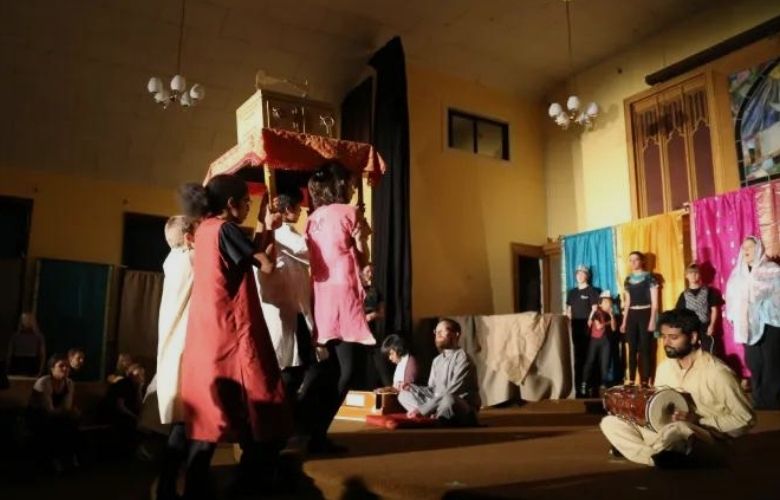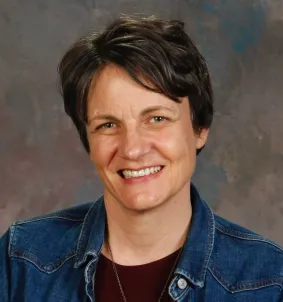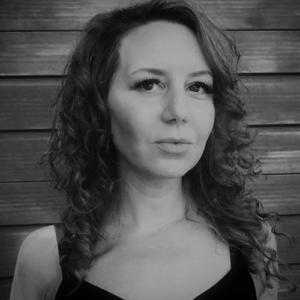
Tama Ward is the vision holder behind Sacred Canopy and its unique approach to biblical literacy and faith formation for children and youth. She is the lead theologian, storyteller, playwright, artistic director and curriculum writer for all of the Sacred Canopy initiatives.
Tama’s parents were missionaries and she grew up in Kenya, East Africa. After completing a BA in English and Anthropology at Trent University she went on to complete an MDiv from McMaster University (Hamilton, Ontario) and served as a preaching pastor and religious educator with the Canadians Baptist of Western Canada for twenty years.
In 2010, following her most formative teachers (Dorothy Day, Oscar Romero, Richard Rohr, Mother Teresa, Francis of Assisi, Thomas Merton) Tama joined the wide and storied landscape of the Catholic Church. She currently works as a religious educator with Canadian Memorial United Church in Vancouver.
Pivoting mid-season with a group of children in community theatre isn’t easy. Kids get attached to their character and the lines they’ve worked so hard to memorize. Letting their moment on stage go can be heartbreaking. In March 2020 we had to abandon a staged production and try to pick up the pieces on Zoom. One of our 10-year olds had reset her whole bedroom with her stuffed animals as stand-ins so that she wouldn’t forget the story.
I spent that first summer writing a socially-distanced script for our troupe of young actors hoping to get back to the stage in the fall but then the second wave hit. We had to pivot again and took up filming the kids on stage in small groups.
The bright lights and in-your face cameras and constant retakes made for great learning but we lost the spontaneity of the stage and the spirit of community that is so essential to grassroots theatre like ours.
Now, as the Delta and other variants mutate around us, I am scrambling yet again to write a new season adapted to altered circumstances: no lines, one narrator, lots of physicality, and a strong musical score.
So how am I doing? It depends! One moment, full of creative energy around how to adapt, and the next… dragging with the weight of second-guessing every decision I make.
I was trained for the pulpit so came into theatre and playwriting through the back door. After ten years of sermon preparation and preaching four things became clear to me:
One, that stories are what captivate and awaken consciousness in a way that pontificating can’t.
Two, that the Bible is packed full of stories of mythic proportion that suffer from centuries of having been buried under bad sermons, pop psychology and theological tugs-of-war.
Three, that a church-based community has a ready made stage, a ready made audience and a ready made intergenerational cast to draw from.
Four, that children are amazing stewards of liminal space. They enable an adult’s crusted-over imagination to encounter old texts anew, like a spring breeze from a forgotten land.
So I took that mix of givens, abandoned the pulpit, and took up biblical storytelling on a stage with children. I have a natural knack for scripting the stories but the theatre arts piece has been a steep learning curve and to this day, though I’ve been at it for twenty years, I suffer from imposter syndrome when I’m around professionally trained theatre people.
Sacred Canopy advances a method called ‘story guild’ as a way of exploring and staging biblical narrative with children and youth for intergenerational storytelling events. It is educational and experiential rather than doctrinal or evanelistic, i.e. it doesn’t set out to convert participants or audience members to a certain worldview but rather trusts the currents of the stories to do their own work of awakening and reorienting.
The story guild method draws on elements of physical theatre for our artistic presentation: choreographed movement and dance over scripted dialogue, an emotive music-based soundscape, and loads of visual and symbolic art). Our approach to the biblical story is episodic and narrator led and more often than not we weave a contemporary story in with an ancient, biblical one.
Almost as important, especially when working with kids, is our emphasis on building community among the participants and the adults who work with them. To this end, we are structured as a guild with apprentices/journeymen/masters and architects with younger participants learning from older, and older caring for younger. To that end, shared events like meals, personal storytelling, sleepovers, and communal blessings are as important to our programming as are the rehearsals and final production.
Sacred Canopy got its start in 1998 at a Baptist Church in East Vancouver, British Columbia. It has since hosted multiple story guild projects in Canada, the USA, Mexico and Kenya. I am currently directing Burrard St. Story Guild, which partners with Canadian Memorial United Church on Vancouver’s westside.
Hands down, the highlights have been our storytelling projects attempting to cross religious divides. In a world where religious fanaticism lies at the root of so much conflict world wide,
I’ve long been convinced that child-led, arts-based storytelling can play a subversive role in peacebuilding,
In 2012 we travelled to Northeast Kenya and worked with Somali Muslims and Bantu Christians to tell the biblical (and shared!) story of the two brothers, Isaac and Ismael, and their distraught mothers, Sarah and Hagar. The experience wasn’t without its challenges, both artistic and theological, but lasting friendships were forged and, at least for a moment, trust displaced animosity.
Similarly we have run four seasons at a site in a poor neighbourhood of Mexico City which bring Protestant (Evangelical) and Catholic kids together for staged biblical storytelling events.
The religious divisions between communities are centuries old and deeply entrenched, but children who encounter the same stories and tell them through a shared artistic and cultural lens can be a bridge – maybe just a narrow footbridge! – but a bridge nonetheless, from one side of the divide to the other.
That’s easy. Our biggest obstacle (which ironically is also our greatest gift) is the fact that we work with the biblical story. Whether a person is religious or not they will almost always have a visceral opinion on the Bible. With so much at stake – emotional, political, or theological – telling Bible stories can be like walking through a minefield .
There are also the stereotypes. When I say I work in a theatre arts program that stages Bible stories with children the first thing that comes to the minds of many are Sunday School pageants complete with terry cloth costumes and belaboured scripts.
We’ve overcome that challenge by staying as close to the human experience in the story as possible. It’s a narrow path but when we land it, and our audience regardless of their predispositions and biases, stand in ‘the thin place’ between worlds it’s quite a moving thing and the defenses come down.
I’ll add that finding compatible funding partnerships is an ongoing obstacle. For all the same reasons. Potential funders, both inside and outside the camp, are wary of religious stories. Because of our content, which rightly or wrongly is perceived to have a religious agenda, we don’t qualify for most funding available to children’s arts groups.
So, for twenty years we’ve gone from pay cheque to pay cheque, mostly raising our own money. Our four trips to Mexico, for example, were paid for by an annual manure sale. For 12-hours the Sacred Canopy staff bagged and sold composted manure to Vancouver gardeners, scraping together just enough to cover our flights and programming expenses for two weeks. which It’s an exhausting way to operate. I had to step back at one point and take a complete break from the whole enterprise.
I didn’t do a great job at curating in the early years. For our first twenty years we were creating on the fly and not capturing our work. There are whole seasons that went unrecorded. Even scripts were lost.
After twenty years in the storytelling trenches as it were I am taking a step back to focus on getting our work and the Sacred Canopy vision out into the world. Among other things this means:
All of this while still writing original scripts for Burrard St. Story Guild and exploring the possibility of a Vancouver-based interfaith storytelling festival.
It’s a good season. It feels like a lifetime of work coalescing into something of storytelling value beyond the confines of my own desk or the stage we happen to be performing on.
Needless to say, the staging of religious stories with children is a niche field . If there are others out there with similar interests and vision I’d love to hear from you.
Links:
@sacredcanopysociety on Facebook
@sacredcanopysociety Instagram

Accessibility At The Smith Center Series: Part One
James “Fitz” FitzSimmons Interview: The Boys In The Band On Netflix


Michelle is a musician and composer from the UK. She has performed across the UK and Europe and is passionate about arts education and opportunities for women and girls.
Read Full Profile© 2021 TheatreArtLife. All rights reserved.

Thank you so much for reading, but you have now reached your free article limit for this month.
Our contributors are currently writing more articles for you to enjoy.
To keep reading, all you have to do is become a subscriber and then you can read unlimited articles anytime.
Your investment will help us continue to ignite connections across the globe in live entertainment and build this community for industry professionals.